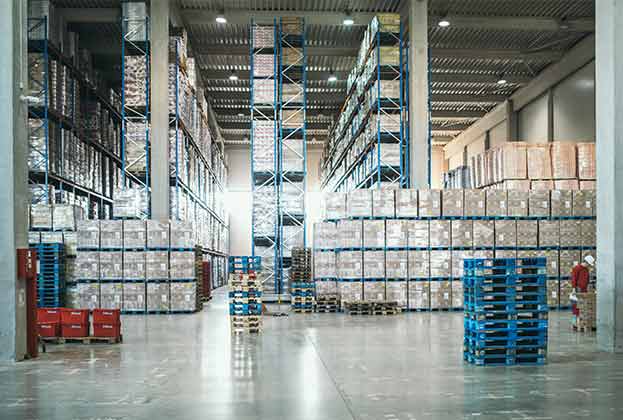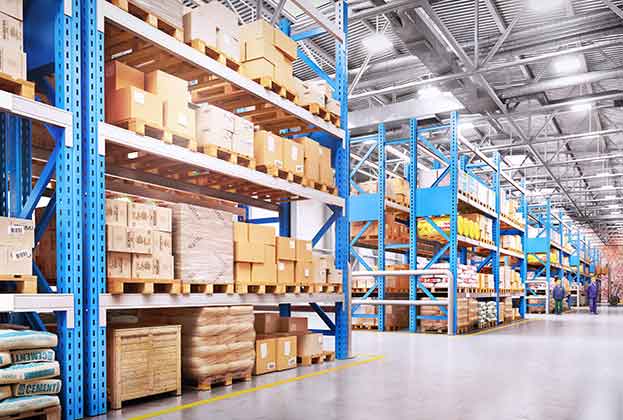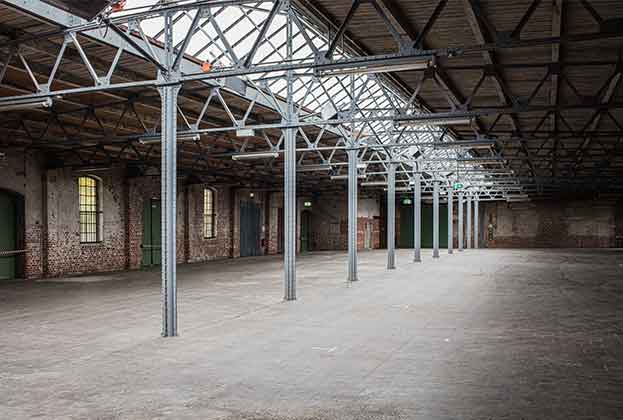Resilient economic backdrop drives logistics output growth.
Economic Overview
Retail sales increased by 2.8% for the year to June 2019 as consumer spending remains resilient across the European Union. The Euro Area household savings ratio has exceeded 12%, the highest level since 2014, which suggests European consumers are still putting enough aside in case of an economic slowdown, saving at a rate of around three times greater than UK consumers.
The Euro Area household savings ratio has exceeded 12%, the highest level since 2014
Savills Research
Despite fears over the slowing manufacturing sector dragging on growth, Focus Economics forecast Euro Area GDP to increase by a modest 1.1% during 2019, rising to 1.3% in 2020. Growth of 0.2% was recorded in the second quarter, after a healthy expansion at the start of the year. The latest data continues to point to a two-speed economy, with lingering weakness in the manufacturing sector contrasting relatively robust services sector activity, though a continued fall in unemployment should provide some relief.
The latest business surveys such as the Manufacturing PMI indicate that the industrial recession in the Eurozone will continue for some time to come-the index recorded its worst quarter since Q1 2013, and a downturn in industry confidence caused economic sentiment to fall to a near three-year low in June. Eurozone industrial output fell by 1.6% MoM in June, lower than market expectations, which was driven by a 4% MoM decline in capital goods output. Overall, analysts see industrial production expanding 0.1% in 2019, which is down 0.2 percentage points from last month’s forecast.
Taking a longer-term view, Central and Eastern Europe are forecast to see the strongest economic growth in the transportation and storage sector over the next five years, with Romania (+9.7% pa), Slovenia (+5.6% pa) and Poland (+5.5% pa) leading the charge, according to Oxford Economics. Likewise, strong private consumption growth in Ireland will support economic growth over this period. Strong online retail sales growth from a relatively low base will see Portugal and Spain outperform, though Western Europe’s stuttering economy, with sector growth generally between 1–1.5% per annum over the next five years. Indeed, the Nordics are on course for more modest growth from this sector over the forecast period, but with e-commerce currently hovering around 10% of total retail sales, we expect this could create higher levels of demand for logistics space.
Logistics viability and the importance of Real Estate within the Supply Chain
Approximately only 10% of total operational costs are accounted for by supply chain costs, and industry-standard metrics indicate that only 0.75% of total operational costs are logistics real estate occupancy. In general, therefore, occupancy costs have less of an impact on margin compared to say, rising labour costs. The viability of a location for logistics purposes, therefore, is greatly dependant on several key factors other than direct occupancy costs. As an example, a 20% logistics rental growth increase would translate into only a 0.15% increase in total supply chain costs.
Savills adopt the LIFER acronym as an insight into these other key factors for logistics operators. Labour generally acts as the main warehousing overhead, and choosing regions with a wide labour pool at affordable rates with accommodating national labour laws is essential for occupiers, particularly e-tailers such as Amazon. Incentives that are often awarded to encourage these large employers, either by government or developers, enterprise zones and economic zones can all help determine a business’s decision to choose a location. Transport / Freight is the single largest supply chain cost and is therefore critical to any logistics business decision on their real estate strategy.
Increasing in its importance to overall viability is the availability, proximity and the cost of energy and this will be an increasing factor in real estate decision making. Finally, the real estate and speed at which it can be made available to occupiers are also key considerations. Land supply, planning laws, construction lead-in times amongst other points all come into this.
Employment and labour flows
The growth of online retail has helped to generate European transport and storage employment growth of 9% over the past five years, creating over one million jobs, which is 1.5 times the all-sector average. The EU unemployment rate currently stands at 6.3%, the lowest level since the survey started in 2000 and this is expected to fall further to below 6% by 2023, as the European economy reaches full capacity, according to forecasts from Oxford Economics (Chart 1).
Two of the issues arising for logistics occupiers are the falling availability of labour and rising minimum wages across Europe. With European minimum wages rising faster than average earnings, this will add pressure to warehouse operators across Europe. However, this is being supplemented to some extent by westward migration from Eastern Europe. Around 1.3 million Ukrainians received temporary work registrations in Poland during 2016, following the economic slump in Ukraine during 2014–15. Westwards migration has been largely driven by slower growth in Ukraine and higher monthly minimum wages in Poland (€523 PCM vs. €142 PCM in Ukraine).
Uncertainty over labour mobility will continue as the Brexit process is prolonged by a further six months, which may delay delivery times for new-build logistics stock. However, we do not expect rising wages and labour shortages to have any major impact on the structural growth of the e-commerce supply chain.
Read the articles within European Logistics below.




